
Paralyzed patients may soon enough be given the chance to walk again thanks to a new development called the 'bionic spine'. This tiny device was developed by researchers from Australia. It is injected into a blood vessel next to the brain, enabling it to read electrical signals, feeding this information into an exoskeleton, bionic limbs, or a wheelchair.
Consequently, this can give paraplegic patients more mobility using just their subconscious thoughts. In creating the bionic spine, Neurologist and lead researcher, Thomas Oxley, from the Royal Melbourne Hospital hopes that through this device, function and mobility will be returned to patients with complete paralysis .
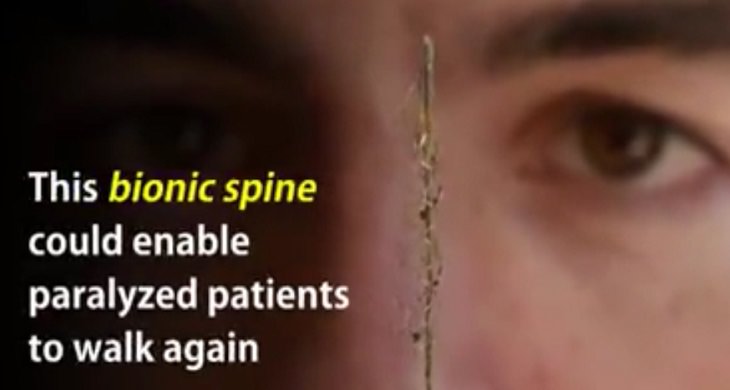
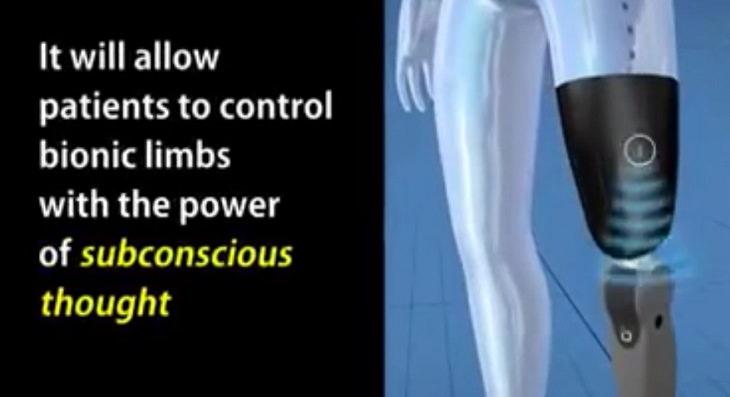
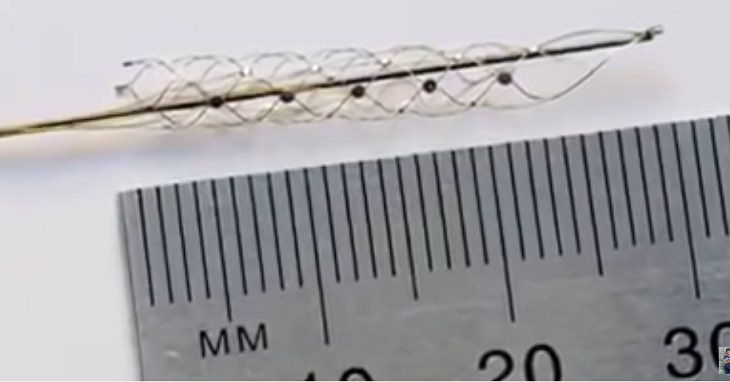
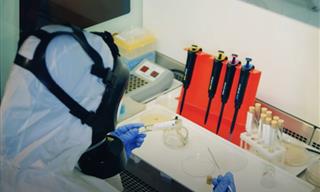 6:11
6:11
A Malaria Vaccine Is On the Horizon
Four malaria vaccines are currently in development or awaiting clinical trials. Here is a review of these vaccines.
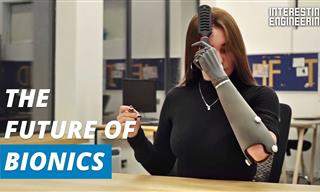 3:09
3:09
This Bionic Hand Has Unheard-of Grip Strength and Utility
Designed by Esper, this smart bionic hand has unheard-of grip strength and functionality. Check out this incredible demonstration of its capabilities!
 9:48
9:48
This Solid Piece of Tape Can Restore Itself
This video is nothing short of amazing! What looks like an ordinary piece of tape is a self-healing polymer than restores itself immediately.
 8:46
8:46
Life on Mars - What Could It Look Like?
From soviet orbiters to NASA rovers, Mars accepted many visitors from planet Earth in the past few decades. Will we ever be able to find life on the Red Planet?
 4:26
4:26
This Crazy Magnetic Fluid Defies Gravity - Fascinating!
Have you ever heard of ferrofluids? These bizarre fluids develop spiky shapes when combined with magnets, and one day, they may be used in medicine...
 8:20
8:20
Just How Germy Are Subways Across the Globe?
What germs survive and thrive in subways across the globe? Are any of them harmful to humans? Hear the answer in this video.
 12:57
12:57
The Curious Science of Tricking Your Taste Buds
Did you know you could confuse your sense of taste? Find out how!
 12:02
12:02
10 Incredible Animal-Inspired Robots
Let's meet some incredibly realistic robotic animals.

I Bet You Didn't Have a Clue About These Human Body Facts!
The human body is the most complex machine known to mankind, but I bet you don't know these 10 amazing facts about it...
 5:13
5:13
Whatever Happened to that Hole in the Ozone Layer?
Let's embark on this enlightening journey to better understand our atmosphere's health.
 14:49
14:49
This Man Built an Automatic Train System for Trash Cans!
Wouldn’t it be cool if a robot picked up and moved our garbage out for pickup with the push of a button?
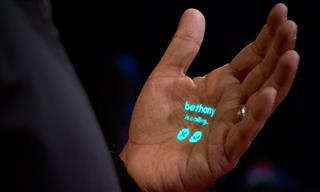 13:55
13:55
The Disappearing Computer: Revolution on a Personal Scale
What happens when we lose the physical large computer all together? This lecture explains what ahead for computers.

6 Weird and Creepy Medical Tools of the Past
After seeing these weird and creepy medical devices of the past, you’ll be thankful you live in the 21st century. Take a look for yourself.
 5:05
5:05
How Do the Drugs We Take Affect Our Brain?
We take many pills these days. What is it exactly that they DO to our brain? Find out now.
 5:56
5:56
What on Earth Is a Black Hole? This Video Explains All...
What on Earth are black holes, how do they affect us, and should we be at all worried about their existence? Find out here.
 7:00
7:00
How To Be Sure Your Dog Adores You
10 scientific ways to know if your dog loves you
 1:53
1:53
Sci Fi Tech: Jetpack Rescue!
Paramedics in Britain are being trained to conduct mountain or sea rescues using jet suits. Find out more.
 16:28
16:28
This Secret Invention Changed the Course of WW2
Let’s take a closer look at the proximity fuze, also called Vt Fuze, an invention that changed the course of the second World War.

7 Weird Facts About the Human Voice That Will Surprise You
We bet you didn’t know these peculiar facts about the human voice.
 8:14
8:14
What Would You Do if You Had an Extra Thumb?
This revolutionary invention has the potential to revolutionize the field of prosthetics.

Science Breakthrough: An Immunization Against Skin Cancer?
This scientific breakthrough offers hope for those who are struggling with skin cancer. You are now invited to discover more about this revolutionary vaccine.

17 Experiments That Produced Very Bizarre Results...
Take a look at this collection of photos showing how common people performed some fascinating accidental scientific experiments.

Can One Photo Really Tell How Good Your Eyesight Is?
Scientists say that this single photograph can tell you whether you have good vision or not. Who can you see in the image?
 6:47
6:47
7 Exciting Physics Tricks You Have to See!
Watch these seven remarkable physics tricks in this exciting and fun video.

These 11 Brain Facts Are Enough to Boggle Your Mind
When you consider the sheer complexity of the human brain, it's difficult to wrap your head around it. Learn these 11 fascinating facts about the human brain.
 12:22
12:22
These Experiments Remind Us Water Isn't Just For Drinking
This video will make you stop and think for a second the next time you're having a glass of water as you remember the brightly colored experiments that this video shows us you can do with water

Chocolate Exposed! Here's What It Does to Your Brain!
Just what is it that makes chocolate so irresistible to so many people around the world? Find all of the answers in the article.
 9:24
9:24
These Shoes Can Boost Your Walking Speed by 250%!
Robotic engineers have created shoes that, they claim, will increase your speed by 250%.

Doctors Make History With First Whole Eye Transplant
Surgeons in New York have performed the world’s first transplant of an entire human eye!
 7:15
7:15
Toilets: The Greatest Medical Advancement in Human History
While toilets make some people laugh, they are actually a deadly serious medical advancement. This video explains what toilets mean to civilization.
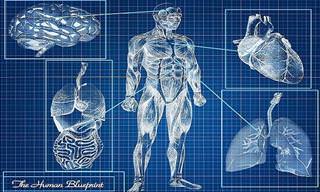
These Are the Miracles That Happen in Our Bodies Every Day
There is a lot that happens inside our bodies every single day. Did you know any of these facts?

Take an Incredible Tour of Our Colossal Milky Way Galaxy
Fly Through the Milky Way Galaxy!
 3:10
3:10
How It's Made: Merino Wool
Long before we invented moisture-wicking synthetic fibers, this type of wool did it naturally for centuries. Here's how it's produced.
 5:07
5:07
The Magical Geometry of Crystals and How It Came to Be
How and why crystals are formed in such distinctive shapes that look like a human must have shaped them.

GUIDE: How Alcohol Affects Us, Drink by Drink...
In this article, we're going to discuss the exact amounts of alcohol in our blood and what they look like, including how each level affects us and our ability to function.

Scary Stories: 11 of the World's Creepiest Experiments
Truth is stranger than fiction, and this can be said for occurrences in the scientific world too. Here are 11 of the world's creepiest experiments
 30:04
30:04
50 Crazy But True Facts About Dreams You Need to Know
Here are some strange and unusual facts about dreams that will surprise you.

The Facts You Didn't Know About the Human Body...
Discover 120 fascinating and surprising facts about your body you may not have known. Going over most of the body parts, you will learn so much you never knew about the body we all use.

6 Shocking Truths About Coffee You Never Knew
Have you been believing these common coffee myths too?
 6:31
6:31
The Psychology Behind Why Some People Are Habitually Late
Now we finally know why some people are habitually late.

Here Are the 16 Oldest Household Objects in the World
If you think ancient life is remote, these pre-historic household items will make you think again. Just look at how old they are!

19 Everyday Items That Started as Military Inventions
Look around your home, and you’ll surely find a handful of these items that were originally developed for the armed forces.
 1:44
1:44
The Accidental Discovery of the World’s First Antibiotic
Not too long ago, it was fairly common to die of the simplest of wounds due to bacterial infection. Penicillin changed everything.

Ancient Skull Found In China Unlike Any Human Ever Seen
A newly-discovered skull in China had baffled scientists. This could mean we might have discovered an entirely new species of humans.
 2:23
2:23
Introducing the Astronauts That Were Just Launched Into Space
The two astronauts — veteran NASA fliers Bob Behnken and Doug Hurley are honored to have been on this flight. Let's get to know them!

20 Incredible Inventions That We Have Completely Lost
Here are some of the most amazing ideas and inventions we have ever seen. But, sadly, all of them have been lost to science in the mysterious mists of history.

These Things All Say Something About Your Body Or Mind
There are many things that you can determine about your body and mind just by looking at yourself. Here are 10 things that your body says about you.


